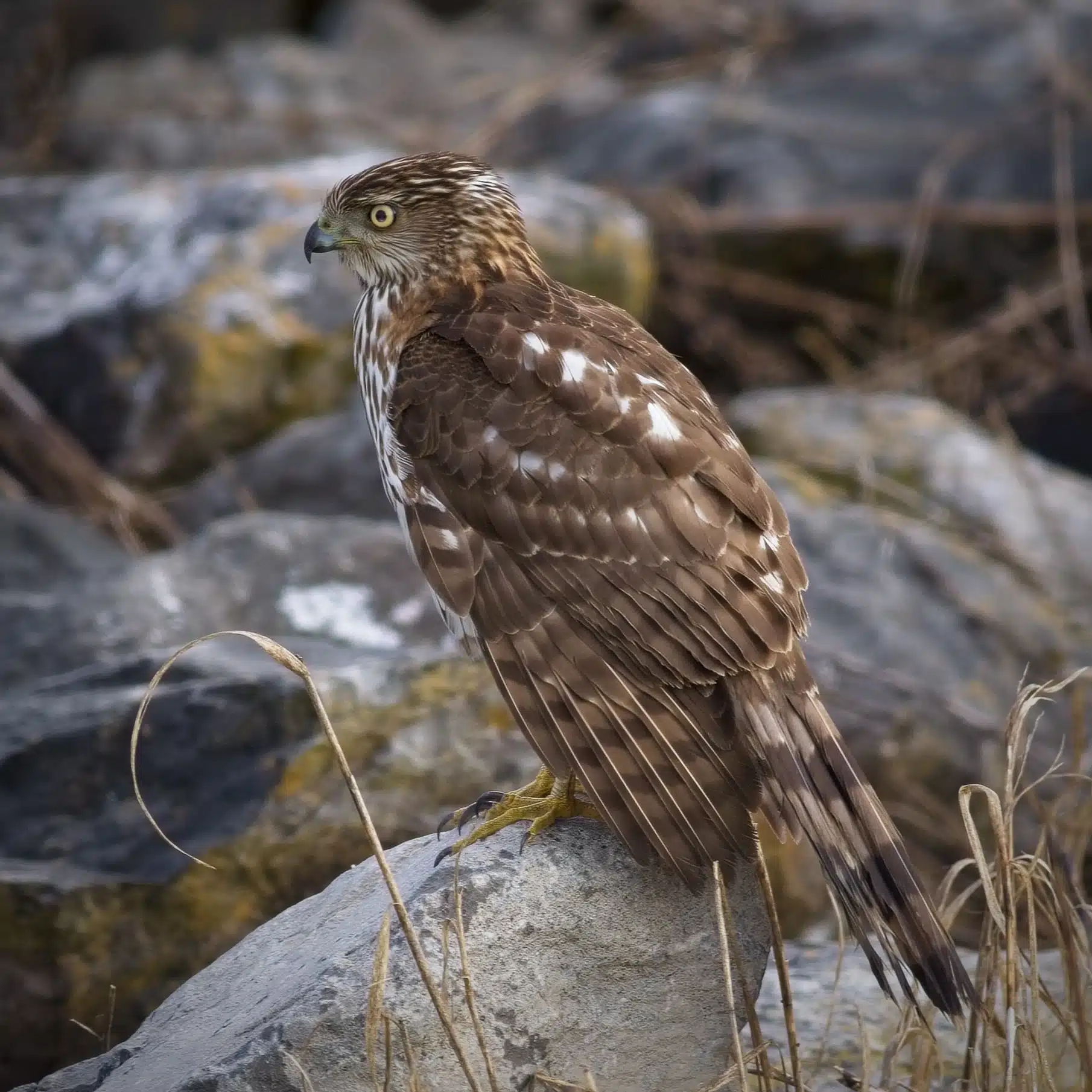I have lost track of the times I have been asked about ways to discourage hawks from feeding on backyard birds. My standard answer was and remains the same – “Hawks have to eat too”. Responses vary, but most questioners remain my friends. And while I empathize with folks that hate to see their backyard birds grabbed by a hawk, especially from a feeder, the reality is that hawks and other birds of prey, play an important role in keeping balance in our natural world.
Learning more about commonly seen hawks will hopefully raise their profile and mitigate their reputation as backyard villains. They are quite fascinating creatures in ways that are linked to their way of life as active predators. As such, they have a high metabolism and must eat regularly enough to stay healthy and able to pursue and capture prey.
Cooper’s and Sharp-shinned Hawks are two of our more common woodland hawks. They are also the main avian predators of small to mid-sized birds. And yet both species will take small mammals, lizards, snakes, frogs, and large insects. They are not picky, just hungry, and when feeding young, busy catching whatever they can.
Cooper’s Hawks nest in Mississippi, using abandoned bird nests or clumps of vines, to which they add a couple of sticks to complete the nest. Sharp-shinned Hawks breed further north into Canada, migrating south in the winter.

Unlike their larger cousins, like Red-tailed and Red-Shouldered hawks of more open habitats, these species are smaller with superior agility within the confines of woodlands. Both species sport longer tails, especially Cooper’s Hawks. These tails are highly flexible and allow for quick turns within the trees, in pursuit of their prey. The tails of Cooper’s Hawks are longer, with uneven lengths, and along with larger heads, helps distinguish them from Sharp-shinned Hawks, whose heads seem to be too small for their bodies.
Stealth is also important, reflected in the mottle, streaky and color patterns of both juveniles and adults. When sitting still, surveying their hunting grounds, they blend in nicely. Only when spotted, as they fly in or depart, do smaller birds and squirrels cry out and strafe them to try and get them to leave. Birds recognize them as threats to themselves and their young.
All birds of prey also have good vision. Their eyes are binocular, like ours, allowing them to rotate independently and focus on objects at varying distances. Their vision is superb, allowing them to detect even the smallest of movements within their habitats. Their flexible necks help them keep their focus on their prey as they fly in to capture their quarry with sharp, curved claws, and a firm grip.
And as sad as it may be to come across a pile of discarded feathers in your yard or woodland, their loss is not trivial. Hawks cull the old and sick among any given bird population – being slow enough to provide these hawks easier targets. In that way, hawks help reduce threats from disease, contributing to healthier populations.
Hopefully, you can understand and appreciate that hawks do have a place in our backyards, keeping our birds on their toes (and wings). They are at the top of most food chains, and as such, help keep balance.
Hope to see you in our great outdoors!
Photos of adult (title photo) and juvenile Cooper’s Hawk (body of story) courtesy of Sharon Milligan. Thanks to Collin Stempien for confirmation of species.